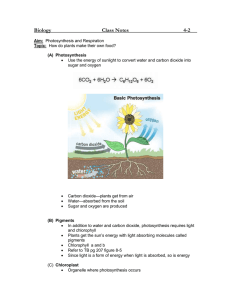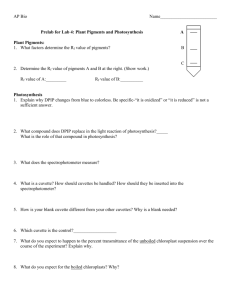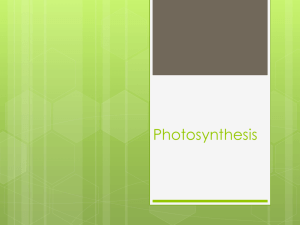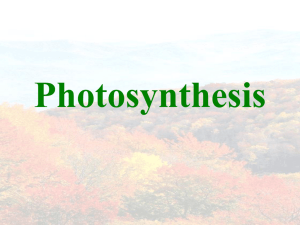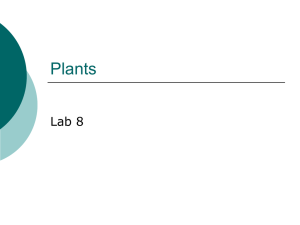Name: _____________________ Date: __________ Period: ____ Chapter 5 Section 2 Photosynthesis •
advertisement
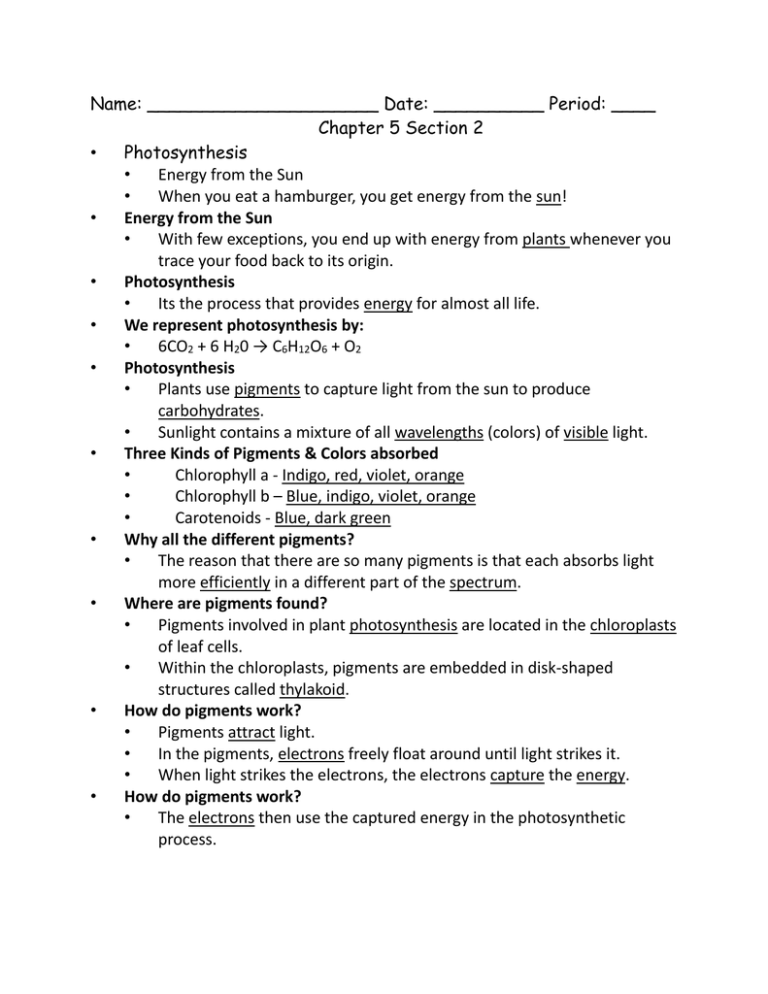
Name: _____________________ Date: __________ Period: ____ Chapter 5 Section 2 • Photosynthesis • Energy from the Sun • When you eat a hamburger, you get energy from the sun! • Energy from the Sun • With few exceptions, you end up with energy from plants whenever you trace your food back to its origin. • Photosynthesis • Its the process that provides energy for almost all life. • We represent photosynthesis by: • 6CO2 + 6 H20 → C6H12O6 + O2 • Photosynthesis • Plants use pigments to capture light from the sun to produce carbohydrates. • Sunlight contains a mixture of all wavelengths (colors) of visible light. • Three Kinds of Pigments & Colors absorbed • Chlorophyll a - Indigo, red, violet, orange • Chlorophyll b – Blue, indigo, violet, orange • Carotenoids - Blue, dark green • Why all the different pigments? • The reason that there are so many pigments is that each absorbs light more efficiently in a different part of the spectrum. • Where are pigments found? • Pigments involved in plant photosynthesis are located in the chloroplasts of leaf cells. • Within the chloroplasts, pigments are embedded in disk-shaped structures called thylakoid. • How do pigments work? • Pigments attract light. • In the pigments, electrons freely float around until light strikes it. • When light strikes the electrons, the electrons capture the energy. • How do pigments work? • The electrons then use the captured energy in the photosynthetic process. • • • • • Why is water used in photosynthesis? • Water is absorbed by the plants to be broken down and used in the photosynthetic process. Uses of H2O in photosynthesis: When water splits, the electrons are taken from the hydrogen atoms. Electrons replace those lost from the pigment when light is absorbed. The hydrogen ions is used to produce NADPH – used in producing glucose. The oxygen atom combines with another oxygen atom and is released as a by-product (waste). Why is carbon dioxide used in photosynthesis? • The carbon in carbon dioxide is used to build the glucose molecule (C6H12O6). • The two oxygen atoms are released as a by-product. 2 Phases of Photosynthesis • Light cycle – Light energy is captured – Water molecules are split • Dark cycle (Calvin cycle) – Carbon dioxide is split – Captured light energy is converted into stored energy with the carbon from CO2 to make glucose. 3 Factors that Affect Photosynthesis • Amount of Light – Increases until all the pigments are used. • Amount of Carbon Dioxide • Temperature
